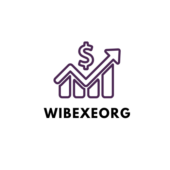Imagine walking into the office, coffee in hand, only to be greeted by the dreaded “PPA at work fee.” Sounds like a bad sitcom plot, right? But this quirky little charge can sneak up on even the most seasoned employees, leaving them scratching their heads and clutching their wallets.
Understanding the ins and outs of the PPA at work fee is crucial for anyone navigating the corporate jungle. It’s not just a mysterious line item on a paycheck; it’s a potential budget buster that could turn a good month into a not-so-great one. So, buckle up and get ready to dive into the world of PPA fees, where knowledge is power and financial surprises are kept at bay.
PPA At Work Fee
The PPA at work fee refers to a charge associated with workplace benefits, particularly those related to personal pension accounts. This fee can vary based on the employer and the specific plan. Employers might deduct this fee directly from employees’ paychecks, impacting their overall take-home pay. Understanding these fees is essential for effective financial planning.
Some employees may not recognize when these fees apply, leading to surprises in monthly earnings. The fee’s structure often includes administration costs, investment management expenses, and other associated charges. Each of these components can contribute to the overall cost, making it vital for employees to review their benefit statements regularly.
Reviewing the specifics of the PPA at work fee can uncover opportunities for cost savings. Companies may offer several options that allow employees to select plans with lower fees. Awareness of these choices equips employees to make informed decisions aligning with their financial goals.
Resources like employer handbooks or financial advisors can provide clarity on fee structures. Employees should take advantage of these resources to stay informed. Seeking transparency from employers regarding fee breakdowns fosters better understanding.
Comparing various plans and their associated fees also promotes better financial practices. Familiarity with available options enhances decision-making, empowering employees to maximize their benefits.
Importance of Understanding PPA at Work Fee


Understanding the PPA at work fee is vital for both employees and employers. Awareness of this fee’s implications can significantly impact financial planning and management.
Implications for Employees
Employees may face reduced take-home pay due to the PPA at work fee being deducted directly from their salaries. Recognizing this possibility helps in budgeting for essential expenses. Unfamiliarity with fee structures can lead to surprises in monthly earnings, affecting financial stability. Regularly reviewing benefit statements enables employees to identify charges and make informed choices. They can compare different plans to discover options with lower fees. Seeking advice from financial advisors or utilizing employer resources empowers employees to optimize their benefits. Knowledge of this fee fosters better decision-making, ultimately aligning with their financial goals.
Implications for Employers
Employers carry the responsibility of clearly communicating the PPA at work fee to their employees. Transparency in fee structures not only builds trust but also enhances employee satisfaction. Implementing user-friendly resources, like handbooks and seminars, can clarify these fees for employees. By being proactive in addressing potential misunderstandings, employers reduce the likelihood of dissatisfaction stemming from unexpected deductions. Additionally, offering options with competitive fees can attract and retain talent. Employers play a crucial role in guiding employees toward cost-effective benefits, securing a positive work environment conducive to achieving mutual financial objectives.
How PPA at Work Fee Works
Understanding how the PPA at work fee functions is essential for employees and employers alike. This fee affects paycheck calculations and overall financial outlook.
Calculation Methods
PPA at work fees derive from various sources, including administrative and investment management costs. Employers determine the fee based on plan specifics, often expressed as a percentage of contributions or a flat amount. For instance, fees may range from 0.5% to 2% of the employee’s salary or pension contributions. Knowing how such fees are calculated helps employees budget more effectively. Regular monitoring of pay stubs ensures employees remain aware of any changes.
Common Practices
Many organizations incorporate PPA at work fees into benefits packages. Some employers choose to absorb these fees, while others pass them on to employees. Transparency about fees plays a significant role in employee satisfaction. Generally, companies utilize resource materials, such as handbooks or online platforms, to explain these costs. Regular financial workshops can also help employees understand their benefits. Engaging with professionals for personalized advice may lead to better decision-making regarding retirement plans.
Advantages and Disadvantages of PPA at Work Fee
Understanding the advantages and disadvantages of the PPA at work fee helps both employees and employers navigate its implications effectively.
Pros for Employees
Employees benefit from increased savings through regular contributions to personal pension accounts. Enhanced retirement readiness can result from the structured saving method this fee supports. Additionally, employers frequently match employee contributions, providing an extra incentive to participate. Engaging with the benefits package can lead to improved financial literacy about retirement planning. Regular statements allow employees to monitor growth in their pensions, fostering a proactive approach to future goals.
Cons for Employers
Employers face challenges in managing communication about the PPA at work fee. Misunderstandings can arise, leading to decreased employee satisfaction and trust. Constant monitoring of fee structures involves administrative burden that can divert resources from other critical areas. Transparency about fees is required to maintain a positive workplace environment, yet it can be complicated to convey clearly. Balancing competitive benefits while managing costs often requires strategic planning and careful consideration.

